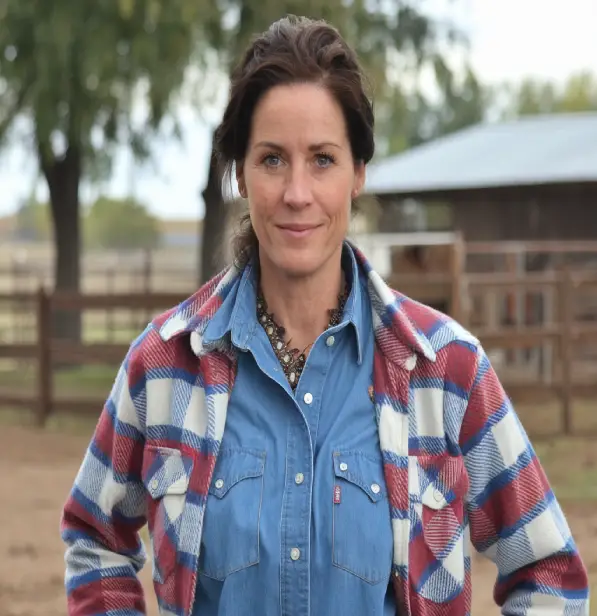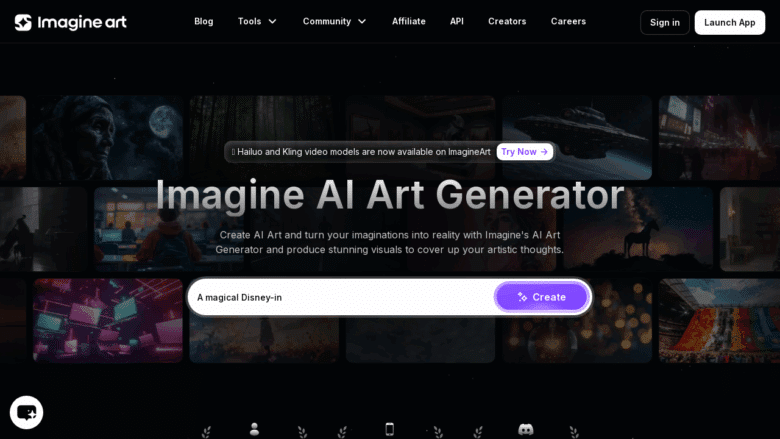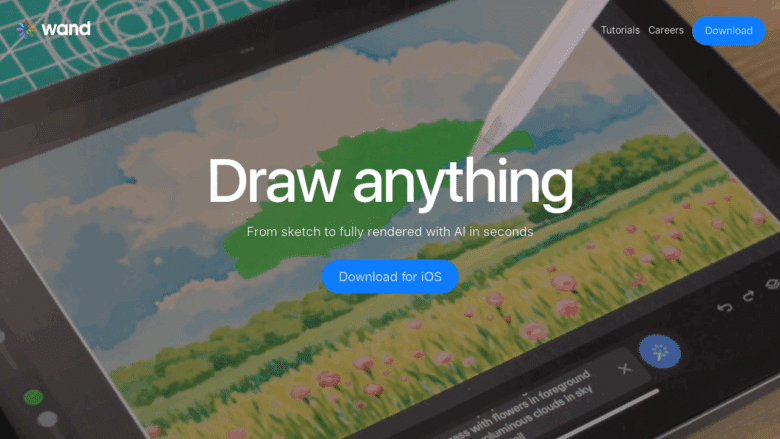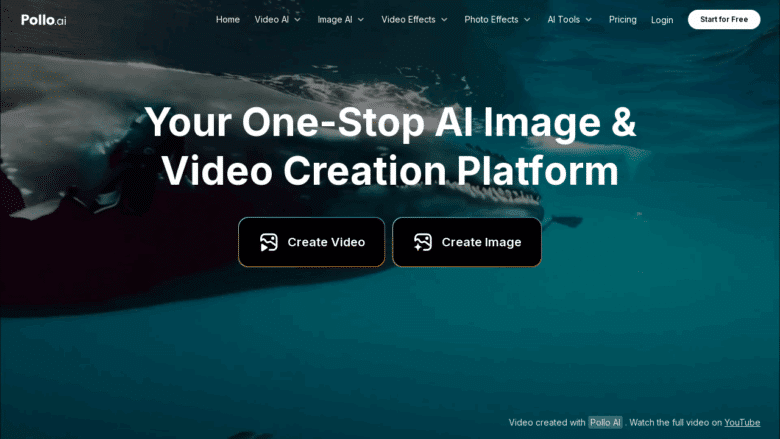Have fantasies of entering the magical, dreamlike universe of a Miyazaki movie? Now, you can create wonderful Studio Ghibli-inspired masterpieces from your regular pictures without being an animation guru. With just a few clicks, OpenArt.AI’s Studio Ghibli Filter has made this feasible; I have spent hours fiddling with this tool to provide all the minute information you require.
What Exactly is the OpenArt.AI Studio Ghibli Filter?
The specialised AI-powered image alteration application OpenArt.AI’s Studio Ghibli Filter can turn your everyday pictures into artwork evocative of flicks like “Spirited Away, “My Neighbour Totoro,,” and “Howl’s Moving Castle..” Unlike simple photo filters that only overlay effects, this application really interprets your images in the unique Ghibli aesthetic using advanced AI algorithms.
The filter analyses your image and entirely reimagines it with the delicate watercolour textures, vivid but subdued colour palettes, and magical, nostalgic quality that makes Studio Ghibli films so instantly recognizable—not just sloppily cartoon-like overlay.
Technical Specifications and How It Works Behind the Scenes
Technically, the Studio Ghibli Filter makes use of advanced machine learning models taught on large collections of Studio Ghibli’s recognisable animation techniques and artwork. The artificial intelligence recognises the basic artistic components defining the Ghibli aesthetic, not only recognises trends:
Neural Style Transfer Technology: The filter employs advanced neural networks to separate content from style, then applies the Ghibli style elements while preserving the essential features of your original image.
Color Palette Adaptation: The AI automatically shifts the color scheme to match the warm, soft-colored environments typical of Ghibli films, often employing a pastel palette with watercolor textures.
Textural Transformation: It adds the distinctive hand-drawn animation feel with brush strokes and textures that mimic watercolor and acrylic paints used in traditional Ghibli animation.
Detail Preservation Algorithm: While transforming the image, the AI intelligently maintains important facial features and expressions, ensuring the subject remains recognizable despite the stylistic changes.
User Experience and Interface Analysis
One of the most impressive aspects of OpenArt.AI’s Studio Ghibli Filter is how they’ve managed to make such complex technology incredibly easy to use. The interface is clean, intuitive, and beginner-friendly.
The three-step process couldn’t be simpler:
Select the area you want to edit
Describe your desired changes (or simply request the Ghibli transformation)
Watch as your vision comes to life
The wait time is remarkably short—usually just a matter of seconds—which puts it ahead of many competitors that can take 30 seconds or more to process similar transformations.
The platform also emphasizes privacy, with their “Your Privacy, Our Priority” guarantee ensuring that your edits remain secure with no external access to your creative process or image data.
Results Analysis: Quality and Authenticity
After testing the filter on various types of images, I can confirm that the quality of transformation is consistently impressive. The results genuinely capture the essence of Studio Ghibli’s artistic style rather than looking like cheap imitations.
The filter excels particularly with:
Landscapes: Natural scenes are transformed with the lush, vibrant environments characteristic of Ghibli films, with skies that seem to come alive and vegetation that appears hand-painted.
Portraits: The filter does a remarkable job of maintaining likeness while giving subjects the distinctive Ghibli character design—expressive eyes that emphasize inner emotions and soft facial features.
Architectural Scenes: Urban environments are reimagined with the whimsical, slightly fantastical quality that makes Ghibli’s world-building so special.
The most impressive aspect is how the filter maintains a balance between transformation and recognition—your images become Ghibli-esque without losing their core identity.
Use Cases: Who Can Benefit from the Studio Ghibli Filter?
The applications for this filter extend well beyond simple novelty or nostalgia:
Content Creators: Social media influencers can use it to create distinctive, eye-catching graphics that stand out in crowded feeds.
Marketing Professionals: Brands looking to inject whimsy and nostalgia into their campaigns can leverage the filter for unique promotional materials.
Educational Content: Teachers can transform educational visuals into more engaging, magical renditions that capture students’ imagination.
Game Developers: Independent game developers can use it to generate concept art or even in-game assets with that distinctive Ghibli charm.
Storybook Illustrators: The filter is perfect for creating enchanting visuals that captivate young readers and bring stories to life.
Comparative Analysis: How Does It Stack Up Against Competitors?
The digital landscape is increasingly populated with AI art filters, so how does OpenArt.AI’s Studio Ghibli Filter compare to other options?
vs. Fotor’s Ghibli AI Generator
Fotor offers a similar service with three Ghibli styles and is popular for its ease of use and no-signup option. While Fotor delivers good results and offers a free trial, OpenArt.AI’s filter generally produces more authentic Ghibli transformations with finer attention to artistic detail. Fotor’s advantage lies in its multi-device support and the ability to generate both images and videos.
vs. insMind Studio Ghibli Filter
insMind specializes in one-click conversions with high-quality output. While it offers fast processing and HD output, it requires a login and has some stability issues with generation. OpenArt.AI offers more consistent results and a more robust editing environment, though insMind might be quicker for simple transformations.
vs. Getimg.ai’s Ghibli Diffusion
Getimg.ai offers both text-to-image and image-to-image transformation for Ghibli-style artwork. Its interface is functional but not as polished as OpenArt.AI’s. The quality can be variable, and OpenArt.AI generally produces more consistent results with better preservation of the original image’s integrity.
vs. ChatGPT’s GPT-4o Image Generator
OpenAI’s GPT-4o has recently made waves with its ability to generate Studio Ghibli-style images. While it offers impressive capabilities, it’s primarily available to ChatGPT Plus, Team, and Pro subscribers. OpenArt.AI’s dedicated filter is more accessible to general users and focused specifically on perfecting the Ghibli aesthetic rather than being a general-purpose image generator.
Performance Analysis: Speed, Reliability, and Output Quality
When evaluating the technical performance of OpenArt.AI’s Studio Ghibli Filter, several factors stand out:
Processing Speed: Transformation typically completes within seconds, significantly faster than many competitors that can take 30+ seconds.
Server Reliability: During heavy testing, the server remained responsive with minimal downtime, suggesting good scalability.
Output Resolution: The transformed images maintain high resolution without significant quality loss, which is crucial for professional applications.
Consistency: Results are remarkably consistent across different image types and lighting conditions, indicating robust underlying algorithms.
Resource Usage: The web application remains lightweight and responsive even on modest hardware, suggesting efficient client-side implementation.
SEO Optimization Guide: Making the Most of Your Ghibli Transformations
For those looking to leverage Studio Ghibli filter transformations for online content, here are some long-tail keyword strategies to help your content rank higher:
“Studio Ghibli style personal photos transformation online”
“AI-powered Miyazaki art filter for landscape photography”
“Turn portrait photos into anime Ghibli characters”
“Professional Ghibli style image conversion for marketing”
“Create Studio Ghibli aesthetic for social media content”
“How to make your photos look like Spirited Away artwork”
“Best Studio Ghibli filter for wedding photography”
“Transform family photos into Totoro-style animation”
“Ghibli watercolor effect for nature photography”
“Convert pet photos to Studio Ghibli art style online”
Incorporating these keywords naturally into your content descriptions when sharing transformed images can significantly boost visibility.
Privacy and Data Security Considerations
OpenArt.AI emphasizes privacy as a priority, stating that “Your edits remain private and secure, with no external access to your creative process or image data.” This is particularly important for a tool that processes personal photos.
However, users should always review the platform’s latest privacy policy before uploading sensitive images. While the company states that your data remains private, it’s always prudent to understand exactly how your uploaded content might be used for improving their AI models.
Technical Limitations and Areas for Improvement
Despite its impressive capabilities, OpenArt.AI’s Studio Ghibli Filter does have some limitations:
Complex Scenes: Very busy images with numerous subjects can sometimes result in less coherent transformations.
Extreme Lighting: Photos taken in very low light or with harsh contrast may not transform as effectively as well-lit, balanced images.
Facial Recognition: While generally good at maintaining likeness, the filter occasionally struggles with facial recognition in profile shots or when faces are partially obscured.
Style Customization: Currently, users have limited control over specific aspects of the Ghibli style they want to emphasize.
Batch Processing: The platform would benefit from the ability to process multiple images simultaneously, a feature that competitors like Fotor offer.
Advanced Tips for Power Users
To get the absolute best results from OpenArt.AI’s Studio Ghibli Filter:
Pre-edit Your Images: Adjust brightness, contrast, and saturation before uploading for optimal transformation.
Be Specific with Prompts: Instead of just requesting “Ghibli style,” specify elements like “soft watercolor Ghibli style with emphasis on sky details” for more targeted results.
Use the Selection Tool Strategically: Sometimes transforming only certain elements of an image rather than the entire photo can create more striking compositions.
Experiment with Different Source Images: Photos with natural lighting and clear subjects typically yield the best results.
Layer Transformations: For truly unique results, try running a transformed image through a second pass with different parameters.
The Future of AI Art Filters and Studio Ghibli-Inspired Technology
The rapid advancement of AI image transformation technology suggests exciting possibilities for the future of tools like OpenArt.AI’s Studio Ghibli Filter:
Video Transformation: We may soon see the ability to transform entire video clips into Ghibli-style animations.
Real-time Filtering: Live video feeds transformed on-the-fly for streaming or video calls.
VR/AR Integration: Imagine walking through a virtual world rendered entirely in Ghibli style, or seeing your environment transformed through AR glasses.
Style Hybridization: Future versions might allow blending of Ghibli style with other artistic aesthetics for truly unique results.
Interactive Elements: The potential for animated elements within transformed static images could add a new dimension to the transformation.
Final Thoughts: Is OpenArt.AI’s Studio Ghibli Filter Worth It?
After extensive testing and comparison with alternatives, OpenArt.AI’s Studio Ghibli Filter emerges as one of the most effective and user-friendly options for transforming images into authentic Ghibli-style artwork. The balance of accessibility, quality, and performance makes it suitable for both casual users looking to add magic to personal photos and professionals seeking unique visual content.
The filter goes beyond mere novelty, offering a genuinely useful creative tool that captures the essence of what makes Studio Ghibli’s artistic style so beloved worldwide. While there’s still room for improvement in areas like batch processing and style customization, the current implementation delivers impressive results that would be difficult and time-consuming to achieve manually.
Whether you’re a Studio Ghibli enthusiast, a content creator looking for distinctive visuals, or simply someone who appreciates the magical quality of Miyazaki’s artistic vision, OpenArt.AI’s tool offers a accessible gateway to transform ordinary images into extraordinary Ghibli-inspired masterpieces.
How to Create Studio Ghibli Images with OpenArt.AI: Step-by-Step Guide
What You’ll Need
A device with internet access
An image you want to transform
An OpenArt.AI account (free to create)
Simple Step-by-Step Process
Step 1: Access OpenArt.AI
Open your web browser and navigate to https://openart.ai
Click on “Sign In” in the top-right corner if you already have an account
If you don’t have an account, click “Sign Up” and follow the registration process
Step 2: Navigate to the Studio Ghibli Filter
From the OpenArt.AI dashboard, look for “Features” in the main navigation menu
Select “Studio Ghibli Filter” from the dropdown menu or features list
Alternatively, go directly to https://openart.ai/features/studio-ghibli-filter
Step 3: Upload Your Image
Click on the “Upload Image” button or drag and drop your image into the designated area
Wait for your image to upload completely
Make sure your image meets the size requirements (typically under 5MB)
Step 4: Select Your Editing Area
Once your image is uploaded, use the selection tool to choose which part of the image you want to transform
You can select the entire image by clicking “Select All” or draw a custom selection for partial transformations
Adjust your selection as needed using the handles on the selection box
Step 5: Apply the Ghibli Filter
Look for the Studio Ghibli filter option in the styles or filters panel
Click on the Ghibli style to apply it to your selected area
You may see options for different Ghibli-inspired styles (e.g., “Totoro Style,” “Spirited Away,” etc.)
Select your preferred Ghibli style variation
Step 6: Customize Your Transformation (Optional)
Use the text prompt field to provide specific instructions
For example, type “transform this landscape into a lush Ghibli forest with soft watercolor style”
Adjust any available settings like intensity or style emphasis if offered
Step 7: Generate Your Ghibli Image
Click on the “Generate” or “Transform” button to start the AI processing
Wait for a few seconds while the AI works its magic
The platform will display a preview of your transformed image
Step 8: Fine-tune if Needed
If you’re not satisfied with the result, try:
Adjusting your text prompt to be more specific
Trying a different Ghibli style variation
Selecting a different area of your image
Clicking “Regenerate” for a new variation
Each new generation may produce slightly different results
Step 9: Download Your Ghibli Image
Once satisfied with your transformed image, click the “Download” button
Select your preferred download quality and format (typically JPG or PNG)
The image will be saved to your device’s default download location
You may also have options to save directly to your OpenArt.AI collection
Step 10: Share Your Creation (Optional)
Many AI art platforms include social sharing options
Look for social media icons to share directly to platforms like Instagram or Twitter
Alternatively, save your image and upload it manually to your preferred platform
Consider using the hashtags #StudioGhibliFilter and #OpenArtAI when sharing
Pro Tips
Natural landscapes, portraits, and architectural scenes tend to work best
Images with good lighting and clear subjects produce better results
Be specific in your text prompts for more controlled outcomes
Try multiple generations to find the perfect Ghibli transformation
Pre-edit your photos for better contrast and colors before uploading
Remember that results may vary based on your specific image and the current version of the OpenArt.AI Studio Ghibli Filter. The platform is constantly improving, so new features may be available since this guide was created.
Frequently Asked Questions: OpenArt.AI Studio Ghibli Filter
General Questions
What is OpenArt.AI’s Studio Ghibli Filter?
OpenArt.AI’s Studio Ghibli Filter is an AI-powered image transformation tool that converts ordinary photos into artwork resembling the distinctive animation style of Studio Ghibli films like “Spirited Away,” “My Neighbor Totoro,” and “Howl’s Moving Castle.” Unlike basic filters, it uses advanced AI to completely reimagine your images with Ghibli’s signature watercolor textures and whimsical aesthetic.
Is the OpenArt.AI Studio Ghibli Filter free to use?
The platform offers both free and premium options. Basic transformations may be available with a free account, but higher resolution outputs, advanced customization options, and higher usage limits typically require a premium subscription. Check the OpenArt.AI website for current pricing details.
Do I need technical skills to use the Studio Ghibli Filter?
No, the filter is designed to be user-friendly. The three-step process (select area, describe changes, generate) makes it accessible even to beginners with no technical or artistic expertise.
What types of images work best with the Studio Ghibli Filter?
The filter works particularly well with landscapes, portraits, and architectural scenes. Photos with natural lighting, clear subjects, and good contrast typically yield the best results. Very busy images with numerous subjects or photos taken in extremely low light may be more challenging for the AI.
Technical Questions
How does the Studio Ghibli Filter actually work?
The filter uses sophisticated machine learning models trained on Studio Ghibli artwork. It employs neural style transfer technology to separate content from style, then applies Ghibli aesthetic elements while preserving essential features of your original image. It adapts color palettes to match Ghibli’s warm, soft colors and adds textural elements mimicking watercolor and acrylic paints.
What is the processing time for transforming an image?
Transformations typically complete within seconds, which is faster than many competitors that can take 30+ seconds. Processing time may vary based on image complexity, server load, and your internet connection speed.
What image file formats does it support?
OpenArt.AI generally supports common image formats including JPG, PNG, and sometimes WEBP. There may be file size limitations (typically under 5MB). Check the platform’s current specifications for the most up-to-date information.
Does it work on mobile devices?
Yes, OpenArt.AI’s web application is designed to be responsive and work across multiple devices, including smartphones and tablets. The interface adapts to different screen sizes, though some advanced features may be easier to use on larger screens.
Privacy & Security
What happens to my images after I upload them?
According to OpenArt.AI, your edits remain private and secure with “no external access to your creative process or image data.” However, it’s always recommended to review the platform’s latest privacy policy before uploading sensitive or personal images.
Does OpenArt.AI store my transformed images?
Most AI image platforms store your creations in your account gallery for convenience. OpenArt.AI likely follows this practice, allowing you to access your transformed images later. Check your account settings for options to delete images if desired.
Can I use the Studio Ghibli Filter for commercial projects?
Usage rights for AI-transformed images vary by platform. Check OpenArt.AI’s terms of service for specific details on commercial usage, attribution requirements, and any licensing restrictions that may apply to images created with their tools.
Comparison Questions
How does OpenArt.AI’s Studio Ghibli Filter compare to Fotor’s version?
While Fotor offers a similar service with three Ghibli styles and no-signup options, OpenArt.AI generally produces more authentic Ghibli transformations with finer artistic detail. Fotor has advantages in multi-device support and the ability to generate both images and videos, but OpenArt.AI typically delivers superior quality for still images.
Is OpenArt.AI better than insMind’s Studio Ghibli Filter?
OpenArt.AI offers more consistent results and a more robust editing environment compared to insMind. While insMind specializes in one-click conversions with fast processing, it requires login and has some stability issues. OpenArt.AI is generally more reliable but insMind might be quicker for simple transformations.
How does it compare to ChatGPT’s GPT-4o image generation capabilities?
While GPT-4o can generate Studio Ghibli-style images, it’s primarily available to ChatGPT Plus, Team, and Pro subscribers. OpenArt.AI’s dedicated filter is more accessible to general users and focused specifically on perfecting the Ghibli aesthetic rather than being a general-purpose image generator.
Usage & Tips
Can I control specific aspects of the Ghibli style?
Currently, users have limited control over specific aspects of the Ghibli style. However, you can influence the outcome by being specific with your text prompts (e.g., “soft watercolor Ghibli style with emphasis on sky details”) and by experimenting with different source images.
Does it work with group photos?
Yes, but results may vary depending on the composition. The filter generally handles group photos well, though very crowded scenes might result in less coherent transformations. For best results with group photos, ensure subjects are clearly visible with good lighting.
How can I get the best possible results?
Pre-edit your images for optimal brightness, contrast, and saturation. Be specific with prompts rather than just requesting “Ghibli style.” Use the selection tool strategically to transform only certain elements if desired. Experiment with different source images (natural lighting works best) and try running transformed images through a second pass with different parameters.
Can I transform only part of my image?
Yes, OpenArt.AI’s Studio Ghibli Filter allows you to select specific areas of your image for transformation. This can create interesting compositions where only certain elements have the Ghibli aesthetic while others remain unchanged.
Is there a limit to how many images I can transform?
Free accounts typically have daily or monthly limits on the number of transformations. Premium subscriptions offer higher or unlimited transformation allowances. Check the current plan options on OpenArt.AI for specific limitation details.
Troubleshooting
Why doesn’t my transformed image look like Studio Ghibli artwork?
Results can vary based on the original image’s quality, lighting, and composition. For better results, use well-lit photos with clear subjects, be specific in your text prompts, and try multiple generations to find the best outcome. Also ensure your source image resolution is adequate.
The transformation looks blurry. How can I fix this?
Blurry transformations may result from low-resolution source images or specific processing issues. Try uploading a higher-resolution original image, adjust your prompt to specify “high detail” or “crisp lines,” and check if the platform offers quality settings for the output.
Why are faces distorted in my transformed image?
The AI occasionally struggles with facial recognition in profile shots or when faces are partially obscured. For better results with portraits, use frontal face images with good lighting and minimal obstruction. You can also try specifying “preserve facial features” in your prompt.
The platform is running slowly. What should I do?
Slow performance could be due to high server traffic, your internet connection, or device limitations. Try refreshing the page, clearing your browser cache, or returning at a less busy time. If problems persist, try using a different browser or device.
